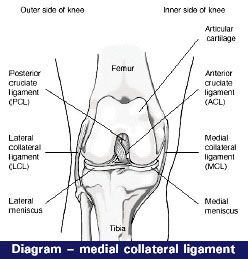Sports strapping and injury management
- 30 June 2006
Whether it’s on the sports field, in the gym, or outside running on the roads, the use of sports tape to support our bodies through those tough workouts and games is a common sight. ANTHONY FONG reveals why.
From the weekend warrior to the elite athlete, there’s usually plenty of brown or white tape
strapped to our legs, arms and thumbs. So why do we use tape? Is it useful for soft tissue injuries? And how do we strap the knee?
Why do we use tape in sports?
 Figure 1 - Initial anchor strapping
Figure 1 - Initial anchor strapping
For injury prevention purposes, to restrict joint and muscle movement and therefore reduce the potential risk of injury. And after an injury has occurred, sports tape is useful to support tendons and ligaments and to enable functional movement of the skeletal structure during
exercise.
As a rule of thumb, it is recommended that strapping should not be used as a substitute for professional medical or exercise advice when you or another player is injured. Other situations when not to use tape are:
- If an injury has not been assessed avoid using tape until assistance arrives on the scene.
- Possible skin irritations and allergic reactions over the injured area may make things worse by using tape.
- An open bleeding wound which would require antiseptic cleaning first.
When strapping, always remind yourself about:
- The nature of the injury, and
- What support or restriction of movement you are trying to achieve.
Is sports strapping useful for soft tissue injuries?
Initially after a soft tissue injury, the RICED (rest, ice, compression, elevation and diagnosis) principle is recommended for the first 72 hours. This allows the inflammation and swelling to settle down before any further exercise therapy work is started. Then strapping maybe used after a further diagnosis.
Rest: Resting the soft tissue injury is important for a speedy recovery.
Ice: Use ice to aid inflammation and swelling.
Compression: Compress ice on injury to also aid swelling.
Elevation: Elevate injury when resting to further aid inflammation.
Diagnosis: After 72 hours, another diagnosis to review progress.
 Strapping may now be applied to support the knee during the recovery phase.
Strapping may now be applied to support the knee during the recovery phase.
Strapping for the knee
Anatomy
The most common injury is to the medial collateral ligament which is located on the inside region of the knee (see diagram). The medial collateral and lateral collateral ligaments are attached to the upper leg (femur) and lower leg (tibia and fibula) joints and both aid to stabilize the knee when moving the knee left and right.
Action of injury
This usually occurs when the knee is flexed and a force hits the lateral (outside) side of the knee. This type of injury is common in contact sports such as rugby league and soccer when a tackle is made and such an impact on the outside of the knee leads to a collapsing and tearing of the medial collateral ligament.
Taping procedure
- Apply initial anchor strips of tape above and below the knee joint (see Figure 1) leaving a gap of 3cm at the back of each anchor.
- Form a cross with the strips of tape running over the medial (inside) side of the knee (see Figure 2) and connecting onto the anchor strips.
- A vertical strip of tape can also be applied from the top anchor to the bottom anchor (see Figure 3).
- Apply final anchor stripes of tape over initial anchors above and below the knee to secure cross and vertical stripes (see Figure 4).
The benefits are numerous and strapping can be a simple procedure to give great support to ligament, muscle and joint movement. However, to provide full recovery from an injury, a complementary flexibility and strength programme during the rehabilitation process is also recommended.
References
1. Clinical Sports Medicine, Peter Bruker & Karin Khan.
2. Sports Injuries & Taping, Bryce Hastings, Auckland. University of Auckland Short Course, August 2000.
3. http://orthoinfo.aaos.org, American Academy of Orthopedic Surgeons.
4. Thanks to Kevin Orrell for use of his legs for strapping photos.
Anthony Fong, MSc, BBS, BA, Cert Mass.
New Zealand Fitness, August / September 2006



